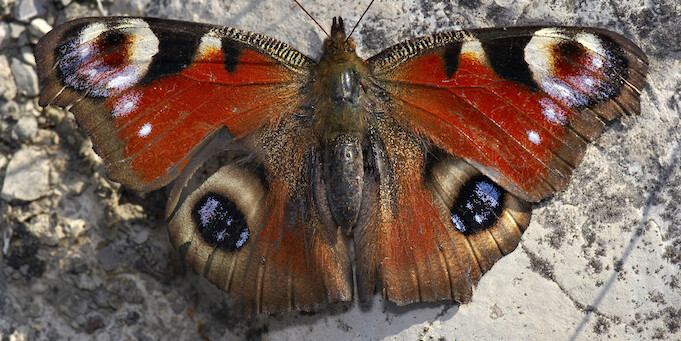A FRIEND OF MINE—the Canadian scholar of Buddhism David Drewes—once observed that we exist at different levels of magnification. Every moment of existence is susceptible to practically infinite expansion—or to shrinking almost to nothingness. We mostly speak and think at a conventional degree of magnification where experience appears to fit into conveniently labeled boxes—“tired,” “successful,” “female,” etc. But around the time that science was discovering the mysteries of cosmic scale—the fact that surfaces, for example, exist at some levels of magnification, but not at others—writers began to explore different scales of experience. Two basic methods emerged, which are still with
- print • Fall 2023
- print • Fall 2023
LAST YEAR, THE FIRST Chinese American movie star was saddled with yet another pioneering honorific: Anna May Wong became the first actress to have the figurative currency of her face made literal, minted on a US quarter. This star, born on silver nitrate, found an afterlife in copper-nickel. I can think of no wrier fate for someone trailed by so much ornamental simile, most often compared to things: Wong’s ex-lover Eric Maschwitz thought her “a piece of porcelain”; Walter Benjamin called her a “chinoiserie specimen” and likened her name to “full moons in a bowl of tea.” I am doing laundry the first
- print • Fall 2023
IN A RECENT INTERVIEW with The Face magazine, songwriter-producer Jack Antonoff—who has counted Taylor Swift, Lana Del Rey, and Lorde in his enviable stable—went on a rant against the NYC scene in general and Dimes Square specifically. “Well, what’s the export?” he asked. “What’s the book, what’s the band?”
- print • Summer 2023
BRIAN WILSON HAS BEEN DEAF IN HIS RIGHT EAR since childhood. He mixed the Beach Boys’ albums, including Pet Sounds, in mono because he couldn’t hear them any other way. “It was sort of like being robbed of something, some pleasure of life,” he said in 1976. “I’m not complaining, but it’s a little bit of a setback.” I think the deafness might explain why the left side of his mouth reaches up when he speaks, like he’s addressing his good ear. (The affect has become more pronounced with age, but it’s visible in footage from the 1960s.) “I got one
- print • Summer 2023
IN HIS 1980 ESSAY ON THE AMERICAN SCENE, “Within the Context of No Context,” George W. S. Trow supplies an anecdote from Harvard in the early 1960s. During an art history class on the Dutch masters, a Black student described Rembrandt as “‘belonging’ to the white students in the room.” The white students totally agreed with this. “They acknowledged that they were at one with Rembrandt,” Trow writes. “They acknowledged their dominance. They offered to discuss, at any length, their inherited power to oppress.”
- print • Summer 2023
IN 1912, THE SWEDISH ARTIST-CLAIRVOYANT Anna Cassel recorded the following message, crystal-clear instructions from a spirit guide, in her diary: “First, allow yourself to have dreams and then visions and colors and numbers, letters and images. Make a careful note of everything. It is of utmost importance to be thorough in your description.” Cassel was a […]
- print • Summer 2023
FRANZ KAFKA’S LAST STORY was a fable about art and labor. “Josephine the Singer, or the Mouse Folk” is a tale told by a mouse who, with marked erudition and fair-mindedness, reflects on an extraordinary community member, the singer Josephine. At times of danger or emergency, the news will spread that she plans to sing. The community assembles, and Josephine, delicate and frail, stands before them in song, her arms spread wide, her throat stretched high. The tones emanating from that delicate throat are, according to some, not singing at all but rather ordinary piping—if anything, weaker and thinner than the
- print • Summer 2023
IN THE SULLIVANIANS: SEX, PSYCHOTHERAPY, AND THE WILD LIFE OF AN AMERICAN COMMUNE, journalist Alexander Stille follows whispers of a psychoanalytic cult and breaks open the story of how psychotherapy escaped the consulting room and became the total environment of its patients. The book centers on Saul Newton, a therapist turned charismatic leader who directed a collective search for liberation through analysis and communal living. Needless to say, it all went horribly wrong.
- print • Summer 2023
BETWEEN 1956 AND 1967, the Coenties Slip on the lower tip of Manhattan was home to a group of artists who had moved to the city with grand ambitions for their work and little money to their names. In those lean years, before they were canonized, Robert Indiana, Ellsworth Kelly, Agnes Martin, James Rosenquist, Lenore Tawney, Jack Youngerman, and Delphine Seyrig all took up residence in this “down downtown,” on a dead-end street on the East River where they nested themselves among fishing ships and sailors, the changing tides and unremitting grime, living at a remove from the New York
- print • Summer 2023
Edvard Munch, Todeskuss (The Kiss of Death), 1899, lithograph, 173⁄4 x 241⁄2″. BOOKFORUM IS BACK. We’ve been on hiatus since December 2022, and the Summer 2023 edition is the first issue produced in conjunction with our new publishing partner, The Nation, a venerable magazine committed to fiercely independent journalism. Our mission is to continue the conversation […]
- print • Summer 2023
IF YOU WERE TO HAVE TWO MEN FIGHT EACH OTHER with a minimum of rules, should they do it in a boxing ring, or a plexiglass cube, or a cage (and maybe an electrified one)? These were the novel logistical questions faced by the founders of the Ultimate Fighting Championship, including a used-car salesman turned ad mogul and a Brazilian described by Playboy as “the toughest man in the United States,” as they attempted to identify what form of martial art was most effective at incapacitating an opponent. Inspired by a Chuck Norris flick, they chose the cage—no electricity—to determine
- print • Summer 2023
AMONG THE OLDEST REFERENCES to menstruation in literature is in the book of Genesis, in a story about a lie. Rachel stole her father’s household gods, it goes, and when he came to retrieve them, she threw a covering over the objects and sat on it. She couldn’t stand, she apologized to her father, because she was in “the way of women.” At the end of the sixteenth century, an English clergyman clarified in his guide to Genesis that Rachel wasn’t pretending to be incapable of standing, just uncomfortable, due to her “monethly custome,” an ancestor to our contemporary “period.”
- print • Summer 2023
WHEN A DEER, A DOE, STEPPED INTO THE ROAD perhaps a hundred and twenty feet ahead of the car I was driving, it seemed for a moment that she would die, even though, during the same moment, I did not feel afraid that I would hit her. I was calm; I returned my smoking hand to the steering wheel; I braked. The deer seemed to be looking at me. There was a chance she might actually run toward me. I switched off the high-beams. All of this happened in two and a half seconds, before the deer continued across the road,
- print • Summer 2023
And I’m not sure why I’m infatuated with death.
- print • Summer 2023
IN OSCAR WILDE’S “The Critic as Artist,” Ernest cajoles his friend Gilbert off the piano bench and into an armchair for a discussion, as the original title of the mock-Socratic dialogue would have it, of the “function and value of criticism.” Over the course of an evening passed in the library of his Piccadilly town house, Gilbert, an incorrigible contrarian, pours glass after glass of epigram, paradox, and hyperbole down the throat of Ernest’s received ideas until they can no longer stand up.
- print • Summer 2023
COME BACK WITH ME, children, to a New York before David Zwirner was Robert Moses, when nobody was watching and a “slightly hunchback, short, magical-looking” buddy from the Pacific Northwest could flood the caves of independent film with color and mayhem. Care was different then—the Hotel Chelsea wouldn’t kick you out for setting off the fire alarm and Allen Ginsberg was keeping visionaries in milk and blankets on 12th Street. The buddy from Washington State was Harry Smith, and John Szwed has ably shaped his chaos for the first full biography, Cosmic Scholar. What remains to be determined—and will be partly
- • June 22, 2023
We are thrilled to announce that, after a brief hiatus, Bookforum is returning under new ownership. If you care about our magazine’s mission, please show your support by getting a subscription today. You will get four print issues per year, beginning with our Summer 2023 issue in August. Bookforum has long staked out new territory in the […]
- • Dec/Jan/Feb 2023
IT IS MY FAULT and only mine if I keep Gordon Matta-Clark as a personal Jesus, but the story flies. Matta-Clark died, way too early, at the age of thirty-five in 1978, and spent a chunk of his time slicing up abandoned buildings, which is very Jesus-y. One of his building cuts has become a permanent part of Manhattan’s west side—of that, more soon—and he even contributed to New York’s proudest category of impermanence: the restaurant. (RIP Food, Soho, 1971–1989.) Matta-Clark was tuned to frequencies prophetic in nature and number: the glow of decay, the need to befriend ghosts, and
- • Dec/Jan/Feb 2023
PINUPS ARE RUMORED TO EMERGE FROM THE SEA, mer-peoples caught between nautical and earthly existence, so that maybe there are fewer black pinups circulating in popular culture, because the sea for us is in part the graveyard of the Middle Passage, not just an escapist fantasy. Black pinups would emerge blood-drenched and haunting, rather than seducing onlookers. Just bypass the trance of glamour and observe Josephine Baker’s double consciousness in any photograph, at once entertaining you and devastating you, silly and caustic with grief. Or just look at Prince and try not to fall in love. Hilton Als’s account of
- • Dec/Jan/Feb 2023
IN A TEACHING MANUAL she wrote in the 1980s, the artist Sybil Andrews stressed the importance of reaching into an image for its essence, stripping away whatever stagnated it. “Can you catch that? Can you get that sense of movement?” she would ask. The advice revealed a design philosophy that had defined her work for decades: her 1931 linocut In Full Cry shows a row of horses leaping over a hedge, their riders’ coattails soaring behind them. The lines themselves are Andrews’s subject, vigorous and unflinching. “I don’t draw the horse jumping,” she said. “I draw the jump.”



















